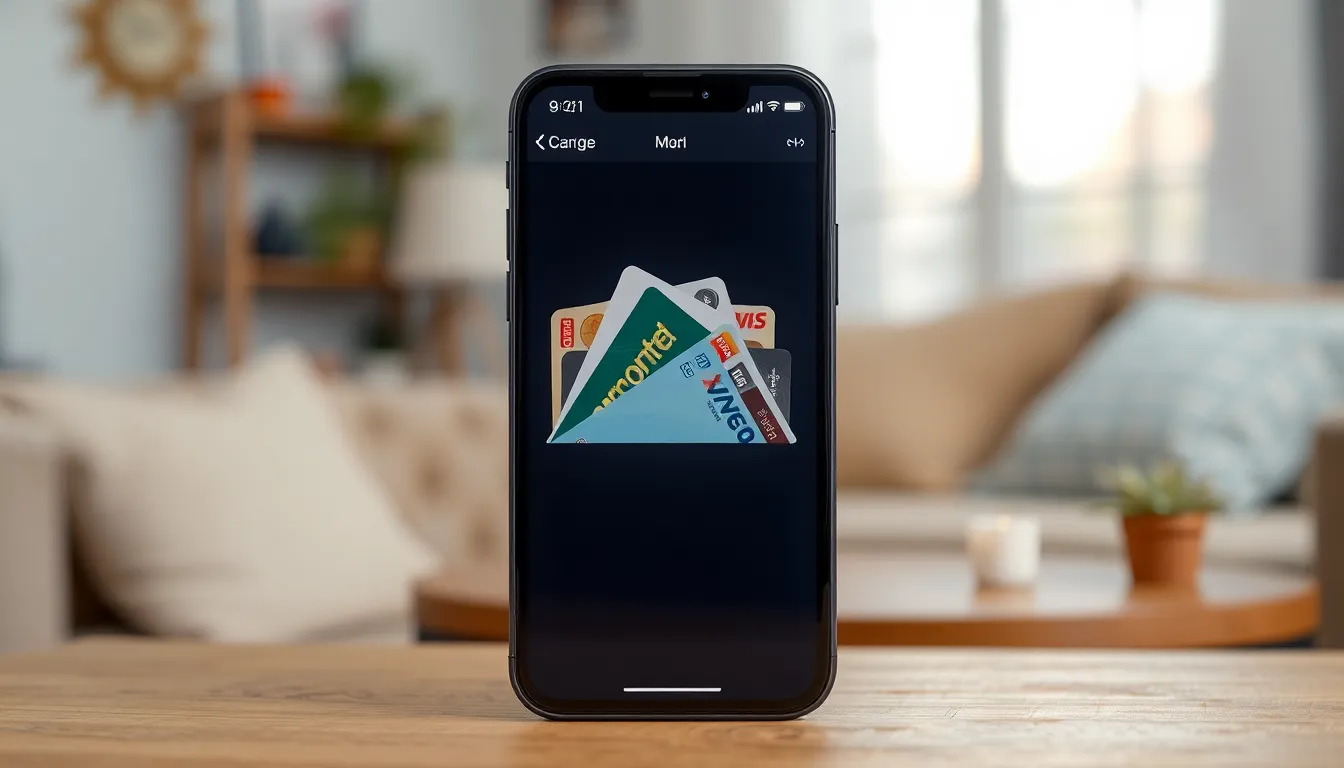In a world where digital wallets are the new black, keeping your iPhone Wallet tidy is essential. Imagine trying to find that one card you need while sifting through a digital mess. It’s like looking for a needle in a haystack—if the haystack were made of expired coupons and old coffee shop loyalty cards.
Table of Contents
ToggleOverview of iPhone Wallet
iPhone Wallet serves as a digital repository for various cards and passes. Users can store credit cards, debit cards, boarding passes, loyalty cards, and more. Managing these items simplifies access during transactions, reducing the need to carry physical cards. Digital organization helps eliminate clutter and improves efficiency.
When items accumulate, finding specific cards becomes challenging. Ensuring only relevant items remain accessible is vital for an optimal experience. Users often benefit from periodically reviewing and removing unused or expired cards. Each type of card serves a distinct purpose, so prioritizing them can lead to a more streamlined experience.
Security remains a core feature of iPhone Wallet. By utilizing biometric authentication, users protect sensitive information. Moreover, digital cards allow for quick updates, unlike physical cards that can become outdated. Having the most current information is essential when checking in for flights or redeeming offers.
An organized iPhone Wallet acts as a powerful tool for simplifying daily transactions. Maintaining it encourages efficiency and enhances security. Users should familiarize themselves with the features to maximize functionality and convenience.
Reasons to Remove a Card

Maintaining an organized iPhone Wallet enhances usability. Various factors contribute to the decision to remove a card.
Privacy Concerns
Privacy concerns prompt many users to remove cards from their digital wallets. Shared devices can lead to unauthorized access, risking sensitive financial information. Removing cards ensures security, especially if a user plans to lend their device temporarily. Regularly reviewing stored cards helps individuals identify any that no longer align with their security preferences. Keeping only essential cards minimizes risks related to potential data breaches. Finally, being proactive about privacy contributes significantly to overall digital safety.
Card Expiration
Card expiration is another reason to remove cards from the iPhone Wallet. Expired cards clutter the Wallet and make access to current cards less efficient. When a card reaches its expiration date, it becomes unusable for transactions. Users benefit from removing these cards to streamline their digital payment experience. Replacement cards often feature updated security information and benefits, making it vital to keep Wallet content current. Periodic checks for expiration dates can prevent confusion when accessing financial resources, ensuring only valid cards remain in view.
Step-by-Step Guide on How to Remove Card from iPhone Wallet
Removing cards from the iPhone Wallet enhances organization and security. Follow these simple steps for a smoother experience.
Using the Wallet App
Open the Wallet app on the iPhone. Tap on the card you wish to remove. Once the card is open, locate the three dots in the upper right corner, and tap on them. Select “Remove Card” from the options provided. Confirm the action when prompted, and the card will disappear from your Wallet. This method ensures only current cards remain, making it easier to navigate your digital storage.
Removing a Card via Apple Pay Settings
Access the Settings app on the iPhone. Scroll down and tap on “Wallet & Apple Pay.” Here, all cards linked to Apple Pay appear. Choose the card intended for removal. After selecting it, scroll down to find “Remove Card.” Confirm the removal, and the selected card will be deleted. Using this method can simplify managing digital payments while increasing security by keeping only necessary cards.
Troubleshooting Common Issues
Troubleshooting problems with the iPhone Wallet can enhance the user experience. Users may encounter issues like inability to remove cards or unexpected errors.
First, restarting the iPhone may resolve minor glitches. This action refreshes the system and can eliminate many temporary issues. If a card won’t remove, checking for software updates is beneficial. Outdated software may lead to functionality problems in the Wallet app.
Another common issue involves the app demanding Face ID or Touch ID for card removal. In such cases, verifying Face ID or Touch ID settings often helps. Users can navigate to Settings, then Face ID & Passcode or Touch ID & Passcode, and ensure these features are configured correctly.
Lack of storage may also prompt issues. Users can check available storage space by going to Settings and selecting General, then iPhone Storage. If storage is low, deleting unused apps or files can create more space.
Connecting to Wi-Fi might assist in the card removal process. An unstable or absent connection can interfere with Apple’s servers, hindering operations like card removal.
Additional issues may arise when sharing devices. If multiple people use the same iPhone, ensuring that private information is secure is crucial. Users should log out of shared Apple IDs and manage Wallet settings to minimize risks.
Finding solutions to these common issues creates a smoother experience within the iPhone Wallet. Addressing these problems promptly leads to better organization and faster digital transactions.
Maintaining an organized iPhone Wallet is essential for a seamless digital payment experience. Regularly removing outdated or unused cards not only enhances efficiency but also bolsters security. By familiarizing oneself with the removal process and addressing potential issues, users can ensure their Wallet remains clutter-free and up to date. This proactive approach leads to quicker transactions and greater peace of mind when managing sensitive information. Embracing these practices allows users to fully enjoy the convenience that the iPhone Wallet offers.





